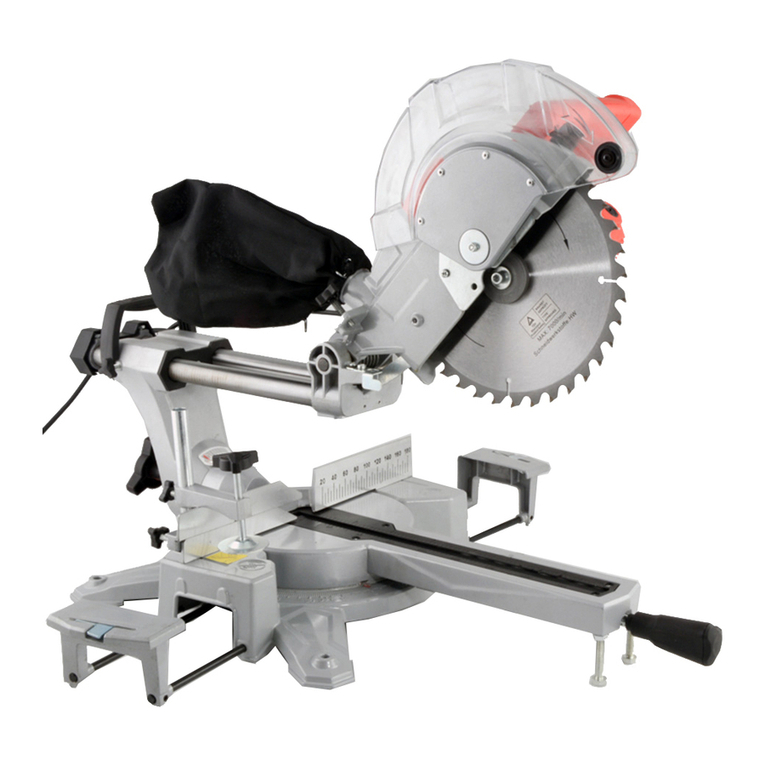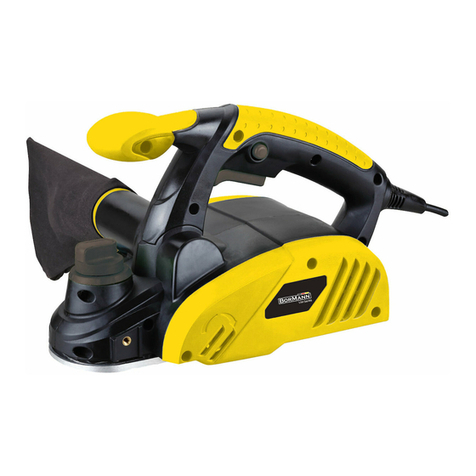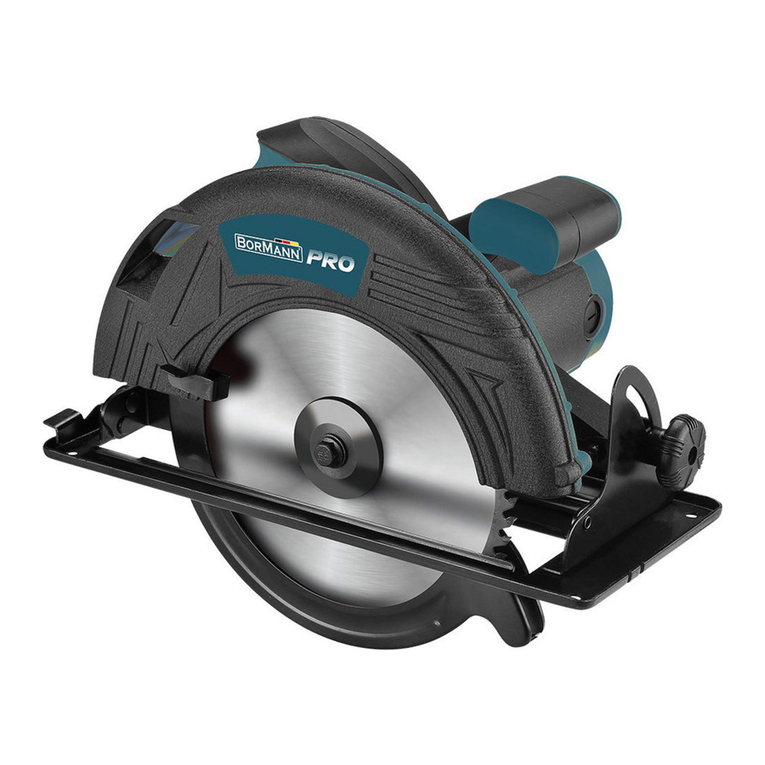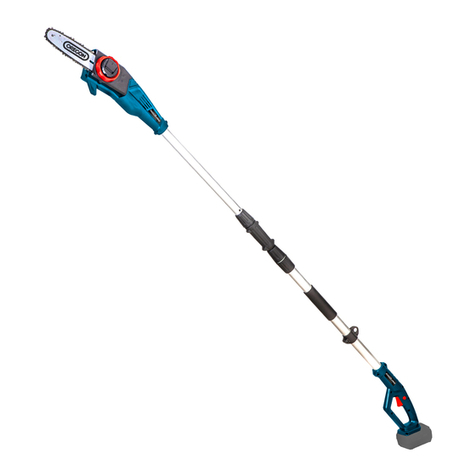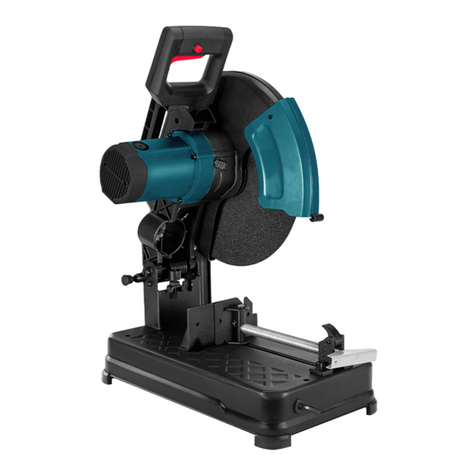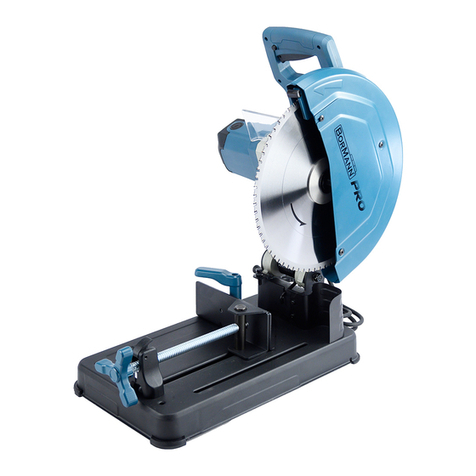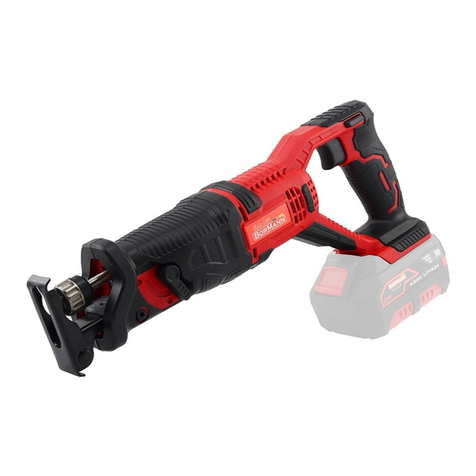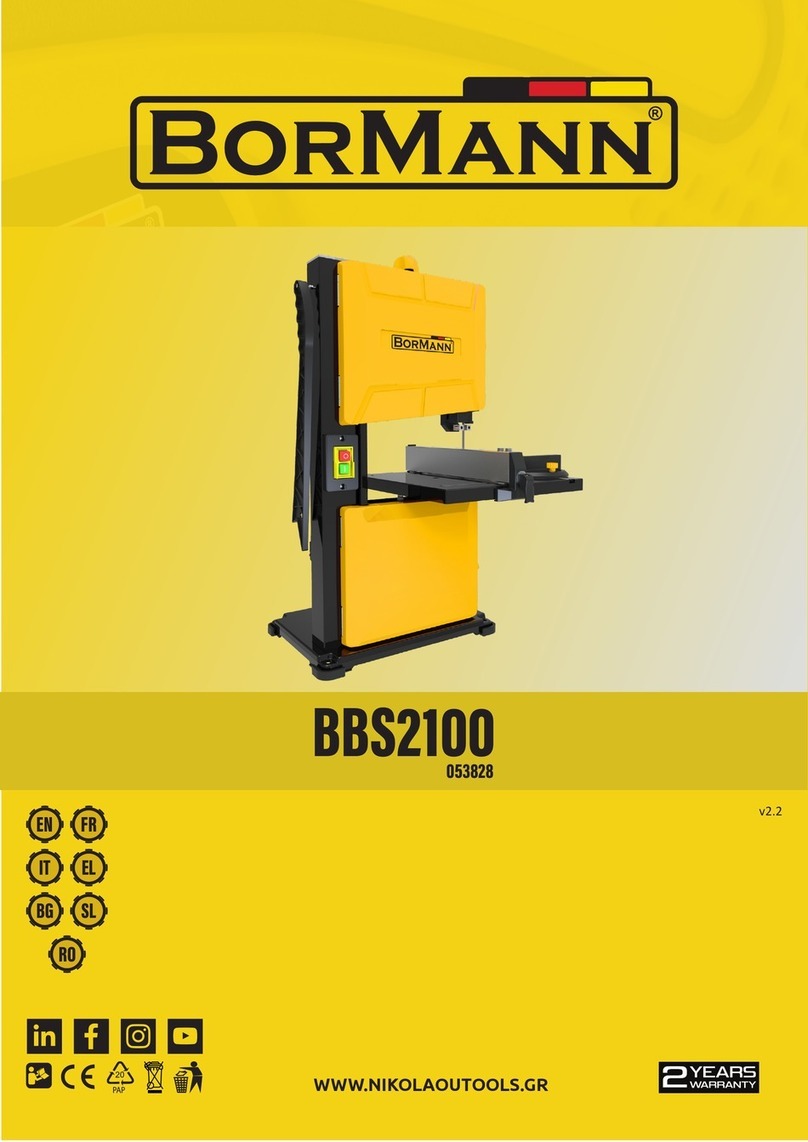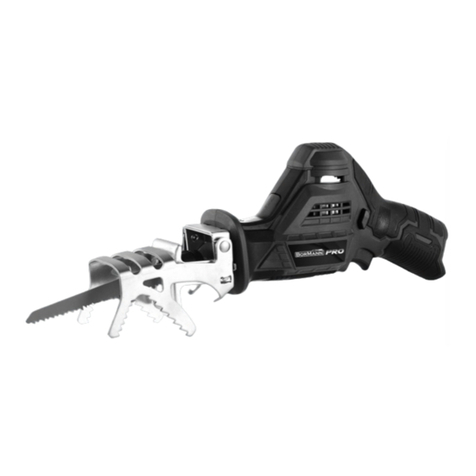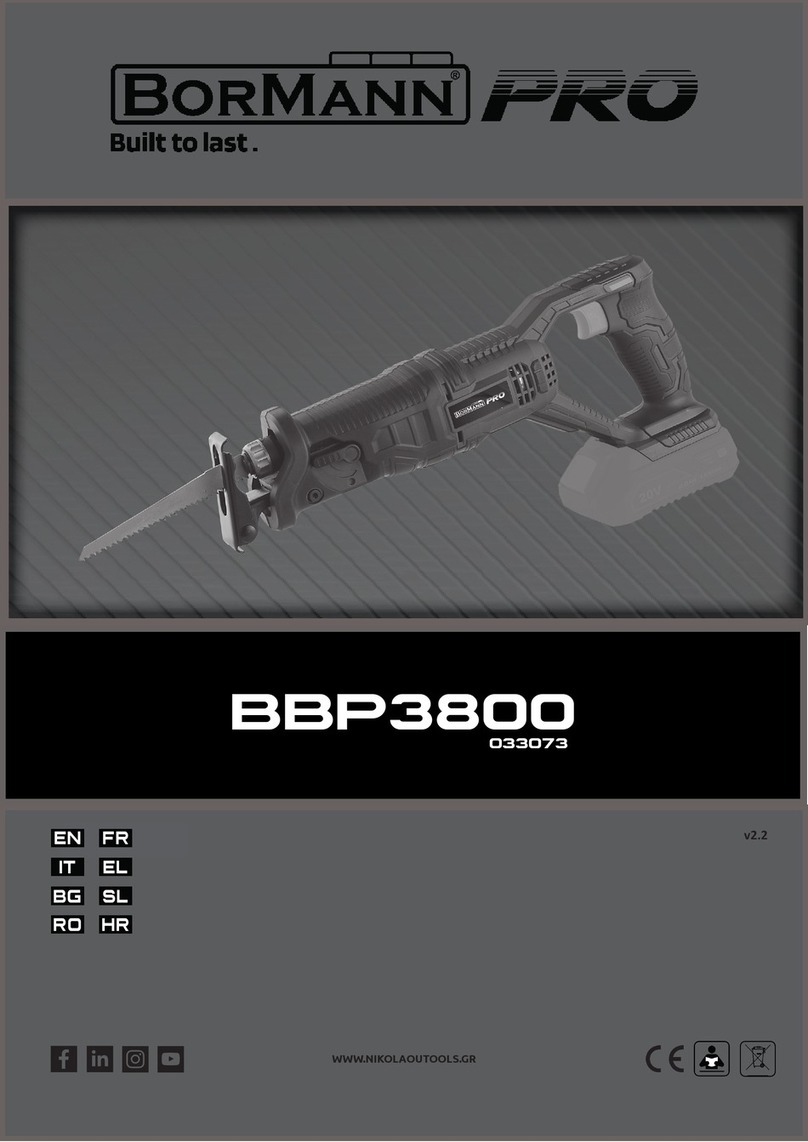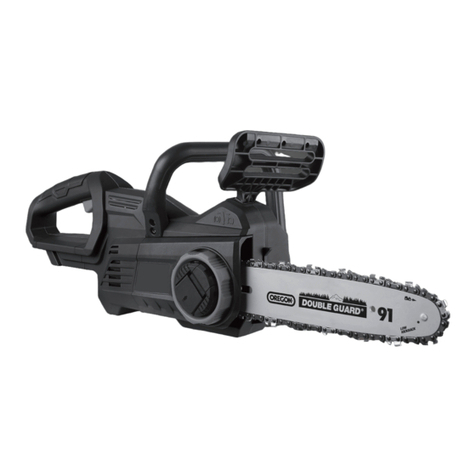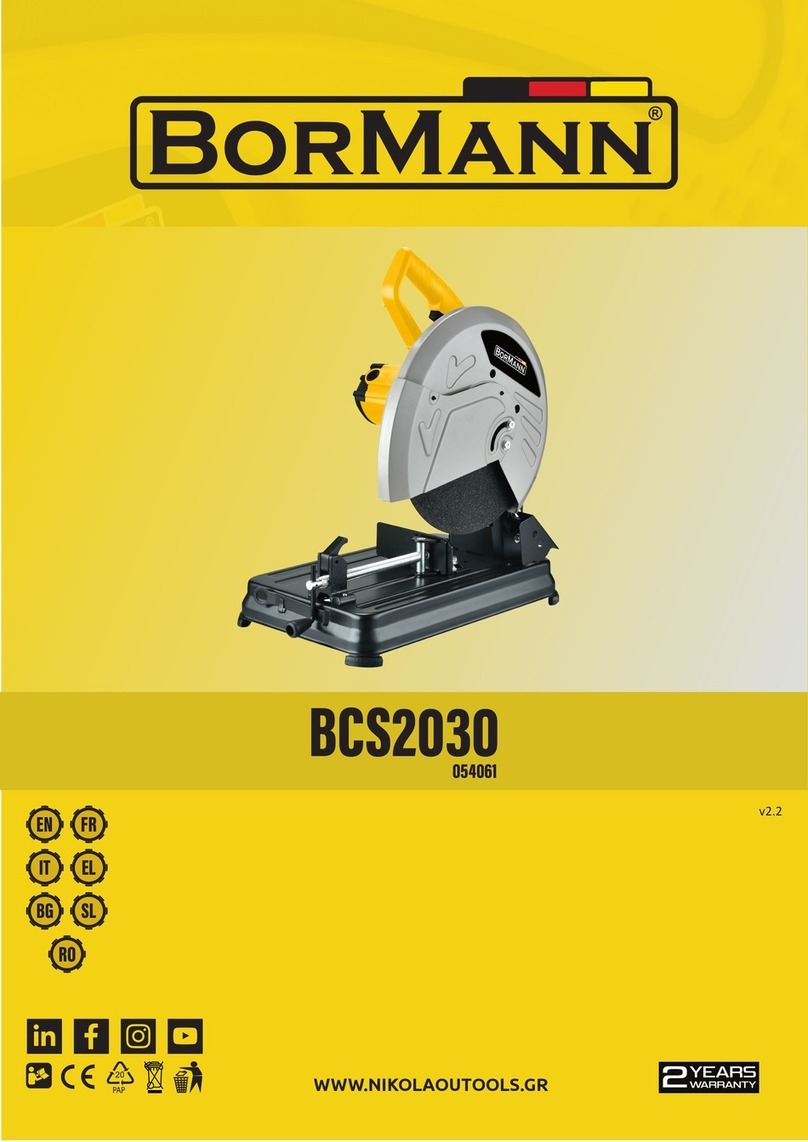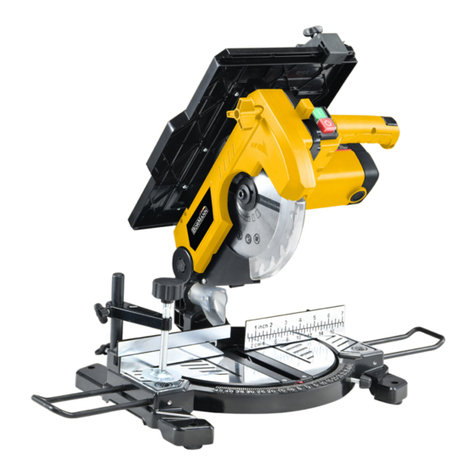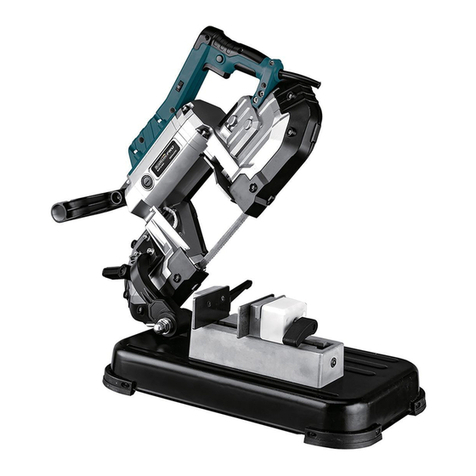
4
Adjustments of the height and the angle of the foot
By means of adjustments of the height of the foot, the cutting height may be set. In order to do so, press the button located in the
front part of the body, indicated with an open padlock symbo,ladjust the foot to the required height and then press the button
indicated with a closed padlock symbol. Make sure the foot will not change the height during operation. Adjustments of the foot
may be gradual. The foot permits continuous adjustments of the angle of the skid, and to do so, it should be inclined in relations to
the foot guide. This permits to adjust the cutting angle, without lifting the foot from the surface of the material being cut.
Adjustments of the oscillation of the blade
The saw permits gradual adjustments of the oscillation of the blade. Adjustments are realised with a lever. The lower the setting,
the lower oscillation of the blade. In case of adjustment ,,O", the oscillation of the blade is off.
The oscillation of the blade facilitates cutting, and its grade must be selected experimentally, for example cutting waste material.
However, the operator should follow the indications below:
- in order to obtain a smooth kerf, it is recommended to set the lowest possible oscillation or even turn it off,
- cutting thin materials (e.g. sheet metal plate), the oscillation should be turned off,
- cutting hard materials (e.g. steel), low oscillation should be selected,
- cutting soft materials, the maximum oscillation should be selected.
Adjustments of the velocity of the blade
The saw is equipped with a potentiometer, which permits adjustments of the velocity of the blade. Turning the ring of the poten-
tiometer, it is possible to select an adequate velocity of the blade for the given task. The lower the setting, the lower the velocity
of the blade.
The velocity must be selected experimentalyl, for example cutting waste material. Lower velocity should be used while cutting
plastics or aluminium. The velocity must be reduced also in case the blade is seized during cutting.
Using the tool
Before work make sure the protection of the blade is installed correctly and lowered. Wear eye and hearing protection, as well as
protective gloves. Fix the object to be cut to the work station, using clamps or an anvil, etc. Do not ever keep the material being
cut in your hands or other parts of the body. In case of cutting, support the material at its edges and close to the cutting line. Place
the supports at both sides of the cutting line, so that during cutting the blade is not seized in the kerf. During cutting the base must
be placed with the whole surface against the material being cut. Connect the dust extraction system to the connection point.
Turning the reciprocating saw on and off
Make sure the surface at the place of work is even, stable and free from dirt. Adopt a secure and stable position.
Hold the tool by the handle. Do not support the tool on any object.
Press the switch with a finger and hold it. Make sure the blade moves freely and the tool does not vibrate excessively and does not
emit smoke or a suspicious smell. In case and irregularity is observed, turn the saw off, disconnect the plug from the mains and
have the tool repaired at an authorised service point.
The switch is equipped with a lock, which may be used during long cutting. When the switch is pressed down, press the lock
button and release the switch. The lock is released when the switch is pushed down.
The tool is turned off when it is unlocked and the switch is released. Once the tool has been turned off, the blade keeps moving for
a while.
Cutting of wood
Before you proceed to cutting wood, use a woodwork pencil to draw the cutting line. Then place the tool on the foot and place the
blade in accordance with the line, and turn the tool on, wait until it has reached the nominal rotation and start cutting. During
cutting do not exert excessive pressure against the foot and the blade, since this might break the inserted tool.
In case of cutting wood, start cutting at a lower rotation and increase it during cutting.
Deep cutting
Attention! Deep cutting may be realised only in case of soft materials, such as soft wood or plasterboards. Do not ever
realise deep cutting in metal or another hard material.
In case of deep cutting, use a short blade. Set the maximum rotation. Place the edge of the foot on the material to be cut and turn
the tool on. Pressing the button, let the blade penetrate the material until the foot completely rests on the material being cut.
Continue cutting along the marked line.
WWW.BORMANNTOOLS.COM
EN

